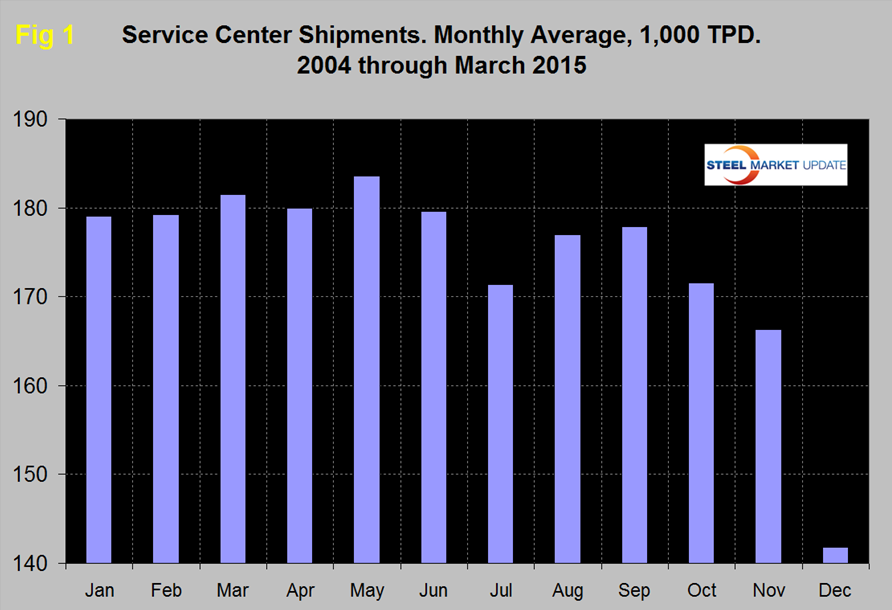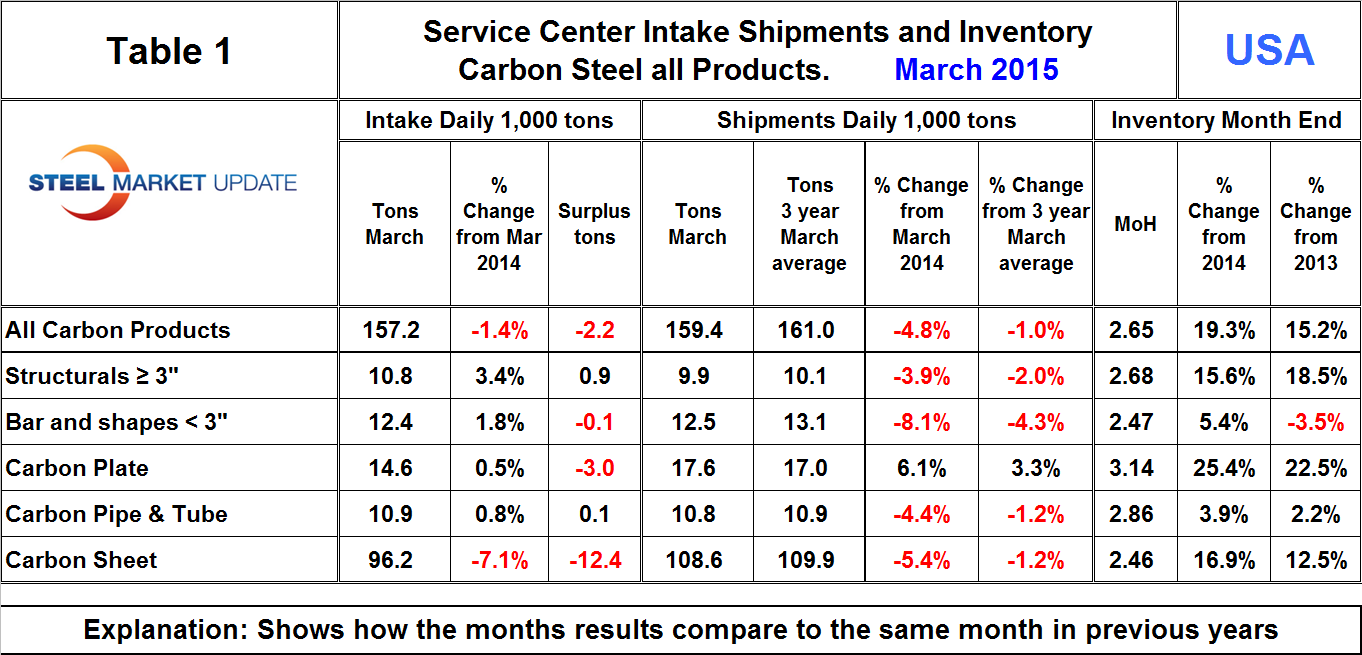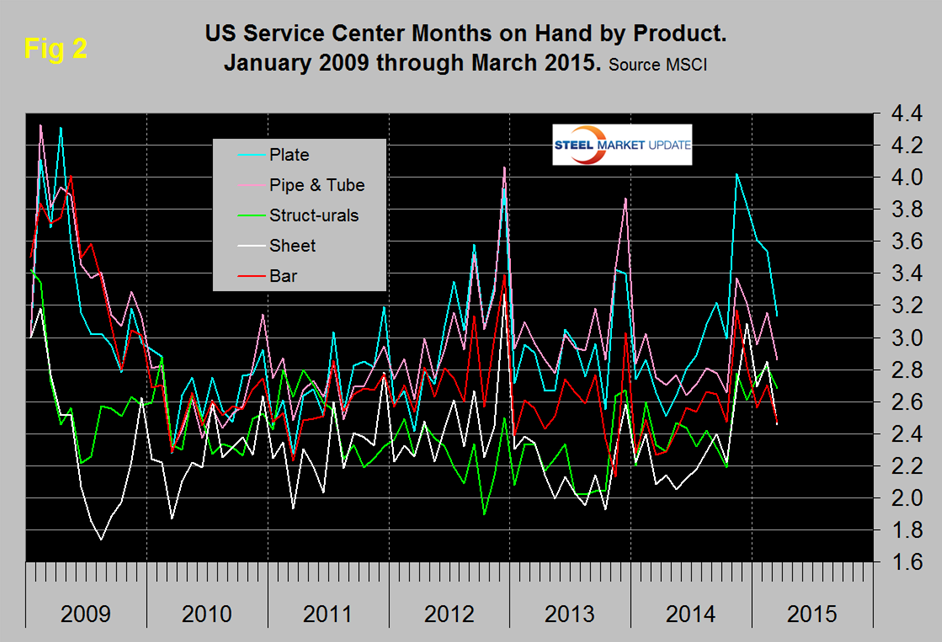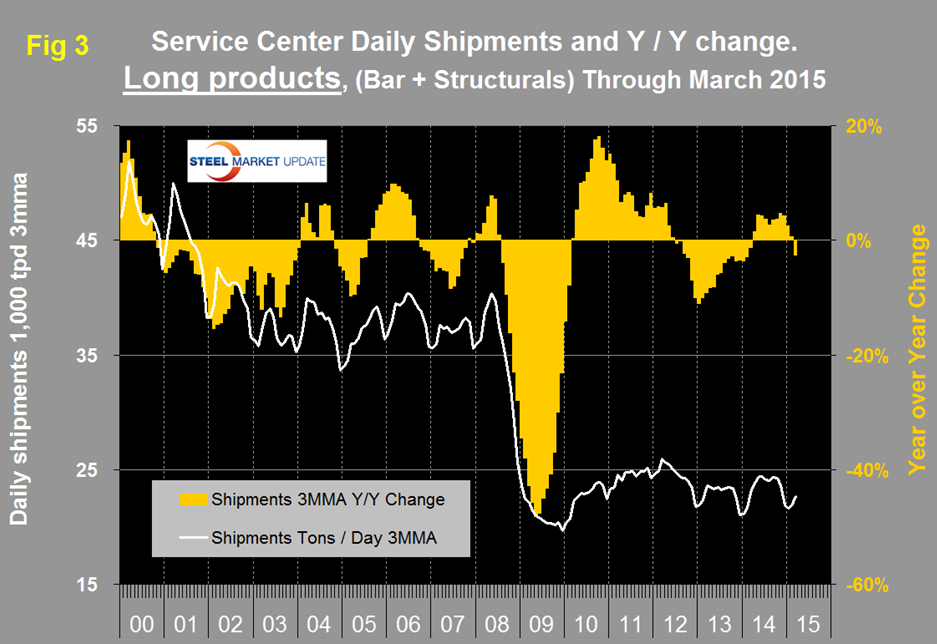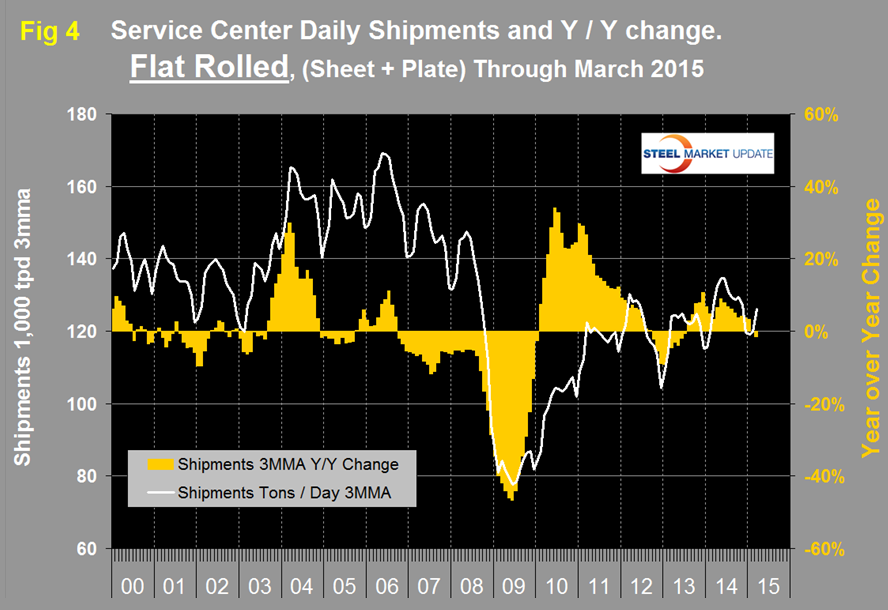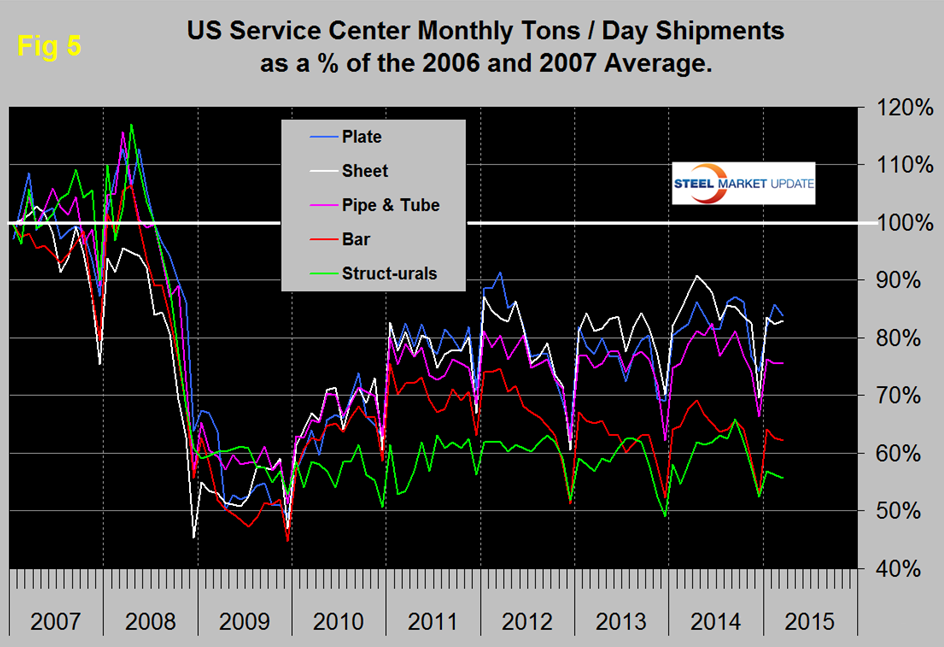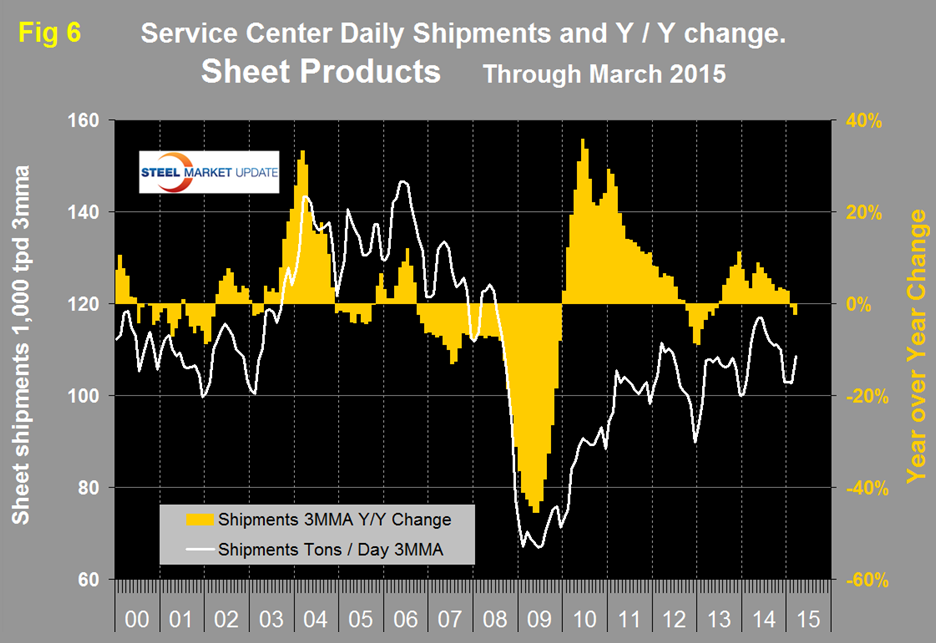Market Segment

April 15, 2015
Service Center Intake, Shipments and Inventory through March 2015
Written by Peter Wright
Total service center carbon steel shipments increased in March by 321,400 tons to 3.507 million tons. Shipping days at 22 were 2 more than February. On a tons per day basis (t/d) shipments increased from 159,300 in February to 159,400 in March.
![]()
In the twelve years since 2004, March shipments on average have been 1.2 percent higher than February. This year March was up by 0.1 percent from February so this was not a particularly good result. So far in 2015 the change in performance for each month has been worse than the 12 year average. Figure 1 demonstrates the seasonality of service center shipments and why comparing a month’s performance with the previous month is usually misleading. For this reason in the SMU analysis we always consider year over year changes.
Table 1 shows the performance by product in March compared to the same month last year and also with the average t/d for March in the last three years.
We then calculate the percentage change between March 2015 and March 2014 and with the 3 year March average. We hope this give the best view of market direction. In March intake at 157,200 tons was 2,200 tons less than shipments. For all products except structurals and pipe and tube, intake was less than shipments and for sheet products intake was 12,400 tons less than shipments. Shipments of all products on a t/d basis were down by 4.8 percent from March last year and were 1.0 percent less than the average March shipments for 2015, 2014 and 2013. The fact that the single month growth comparison is worse than the three year comparison is an indication that momentum is negative and growth is slowing. Shipments of all products, except plate, were down year over year on a t/d basis.
March closed with months on hand (MoH) at 2.65, down from 2.94 at the end of February. Compared to the end of March last year, month end inventories were up by 19.3 percent in total. All products had a year over year inventory increase led by plate which was up by 25.4 percent. Figure 2 shows the MoH by product monthly since January 2009. Plate products shot up to over 4 MoH at the end of November and were still high at 3.14 at the end of March.
There continues to be a wide difference between the performances of flat rolled (sheet+plate) and long products, (structurals + bar) at the service center level. Long products have had a very poor recovery from the recession. On a 3MMA basis y/y, the growth of shipments was negative for 21 straight months until April last year which was the first of eleven months of growth. However in March on a y/y basis shipment growth returned to negative territory at -2.6 percent (Figure 3).
Flat rolled has had a much better recovery since mid-2009 and had positive y/y growth for 18 straight months through January. In February growth slowed to zero and in March came in at negative 1.6 percent (Figure 4).
In 2006 and 2007, the mills and service centers were operating at maximum capacity. Figure 5 takes the shipments by product since that time frame and indexes them to the average for 2006 and 2007 in order to measure the extent to which service center shipments of each product have recovered.
Again, it can be seen that bar and structurals have the worst record. Sheet and plate have had the best recovery since the recession followed by tubulars. Even so, the recovery of sheet is only at 83.0 percent and plate at 83.8 percent. The total of carbon steel products is now at 75.1 percent of the shipping rate that existed in 2006 and 2007, with structurals and bar at 55.8 percent and 62.2 percent respectively. The recovery of the service center sector has been much slower than has been experienced by the mills. Presumably this is because more buyers are purchasing mill direct and this is probably particularly true of long products. In addition, long products being more construction oriented are suffering from the slow recovery of that business sector.
MSCI uses product nomenclature flat and plate. In this analysis at SMU we replace the term flat with sheet. By our interpretation of the MSCI’s data their definition of “flat” is all hot rolled, cold rolled and coated sheet products. Since most of our readers are sheet oriented we have removed plate from Figure 4 to highlight the history of sheet products which are shown in Figure 6.
Following the strong post-recession recovery, sheet products experienced 9 months of decline from October 2012 through June 2013. This was followed by eighteen months of growth through January this year but February slipped back into negative territory at -0.7 percent year over year and the March result was -2.3 percent.
The SMU data base contains many more product specific charts than can be shown in this brief review. For each product we have ten year charts for shipments, intake, inventory tonnage and months on hand. Readers are welcome to these on request.



